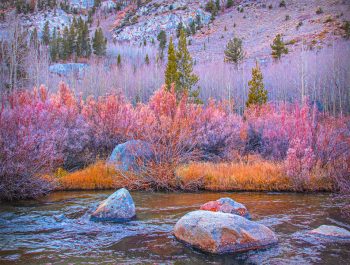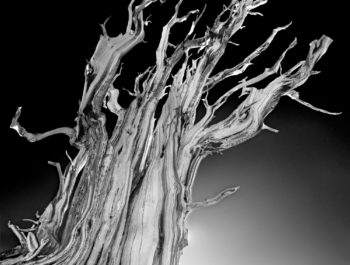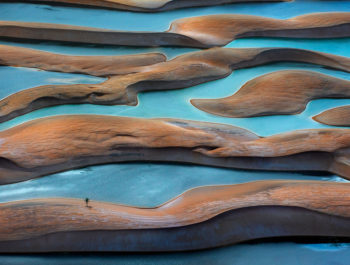Silo City Reflections
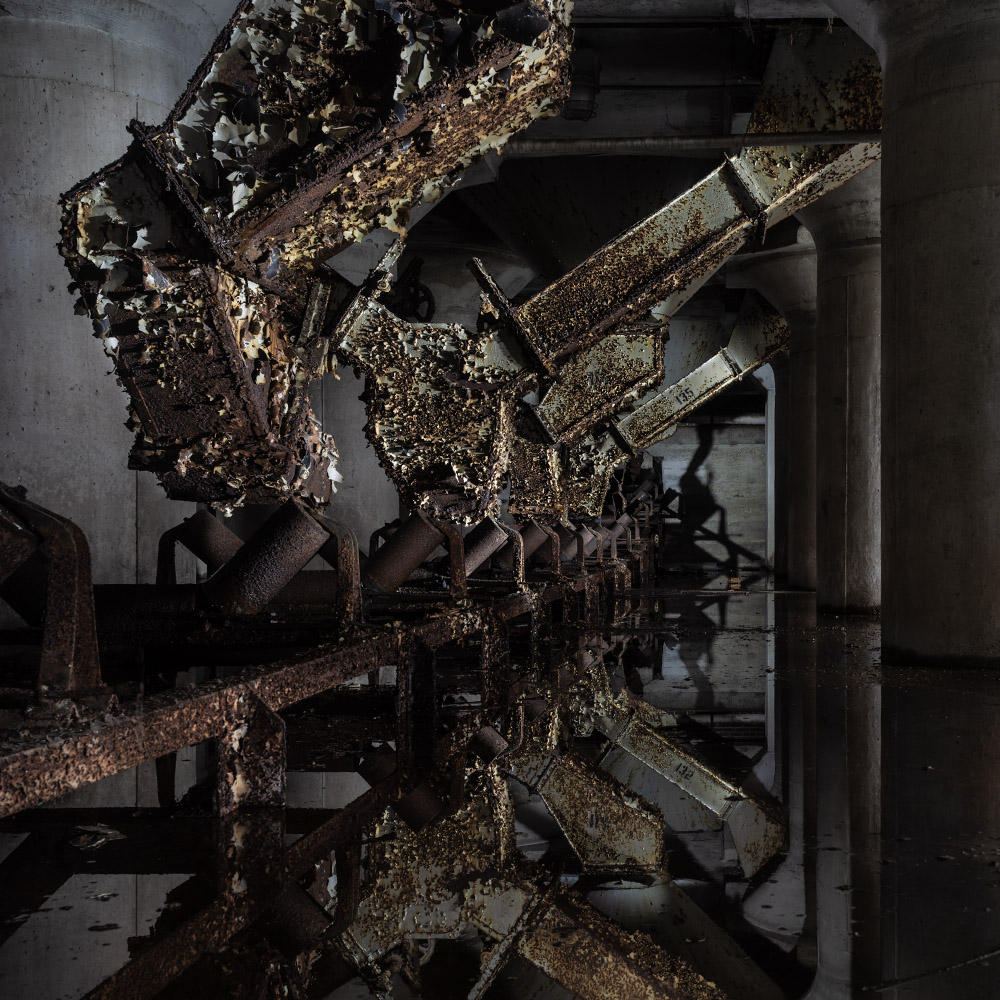
The year before last I wrote an article for Kevin Raber’s website entitled Silo City Revisited as a follow on to articles by Michael Reichmann and Kevin about photography at the grain silos, elevators and flour mills on the Silo City site in Buffalo. At around that time the Lake and Rail buildings had just shut down. They included the silos, a flour mill, and a pair of marine legs and had been bought by Rick Smith who owns the site, and opened for access during photography workshops run by Mark Maio.
I had thought of writing this article after realizing I had a number of images that included and were made effective by the use of reflections. I planned to weave thoughts about reflections in the images as well as my own thoughts reflecting on the history and photography at Silo City. Well it turns out that my brain cell doesn’t have sufficient depth to make the story interesting (not even to me, let alone other readers I suspect) so I held off writing it, but then decided to take a simpler tack to show these images, but this time describe them in a little more depth.
As a reminder about Silo City; the site is on one of the last bends of the Buffalo River as it feeds into Lake Erie and is owned by Rick Smith who also owns Rigidized Metal adjacent to the silos. While you can get a short tour from one of the local tour companies Mark Maio runs a 2 ½ day photography workshop that gives almost free access to the 6-acre site (with 1 million square feet of building space). So in these times you’ll have to work pretty hard not to social distance as the workshop is not led, and aside from a short safety tour for 1st timers, everyone is free to roam.
So, On With The Images
The photograph at the start of the article; American Silo Refection is a light-painted image taken during the day. Very little light leaks through to the bottom floor in the American building, just enough to softly light the edge of the pillars on the right and the face of the pillars to the left. The rest of the image had to be light-painted to capture the rust and peeling paint on the series of silo chutes. They had to be lit one at a time from the side to capture the depth of decay together with a couple of separate exposures to balance the image. At the end of the article, there’s a short breakdown of the image for anyone interested in a very high-level look at the process.
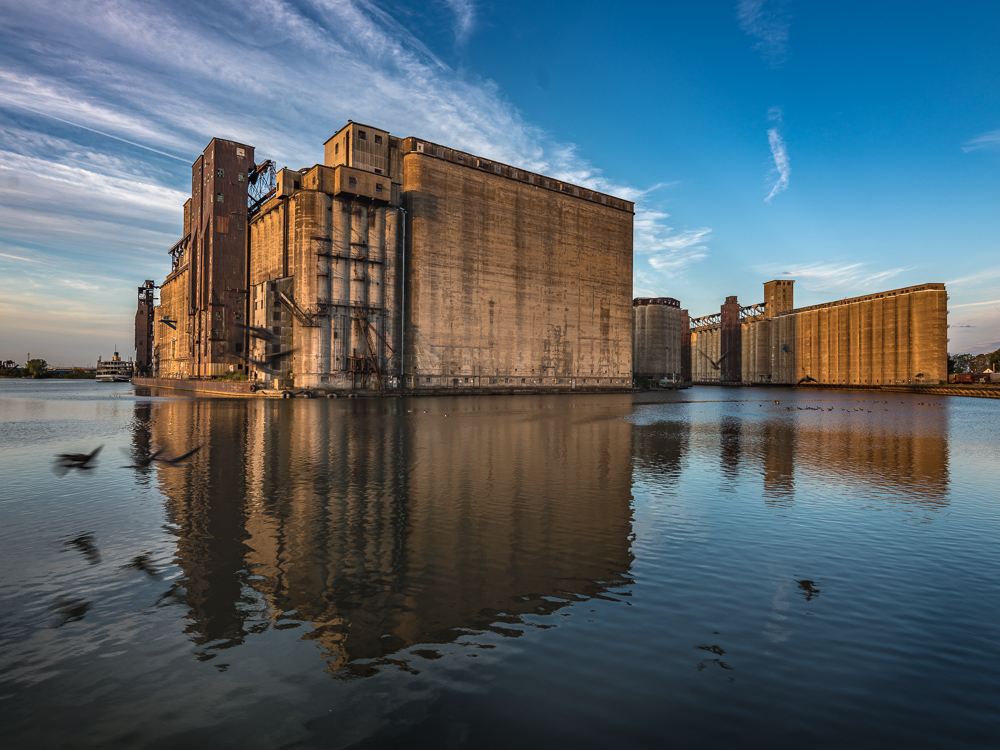
This is an iconic image of the back of the Lake and Rail building taken from the foot of Hamburg St. On the best day, the light will arrive from the rising sun behind and to the left of the photographer from this view. It will light the faces of the buildings and present the viewer with a golden glow reflected in a calm surface of the river. The practice is not always the case of course. On this day the sky was a little hazy, blocking the sun, and the surface of the river a little ruffled. The geese, however, were taking off periodically and I decided to look for an image with their ghostly forms captured over the old building.
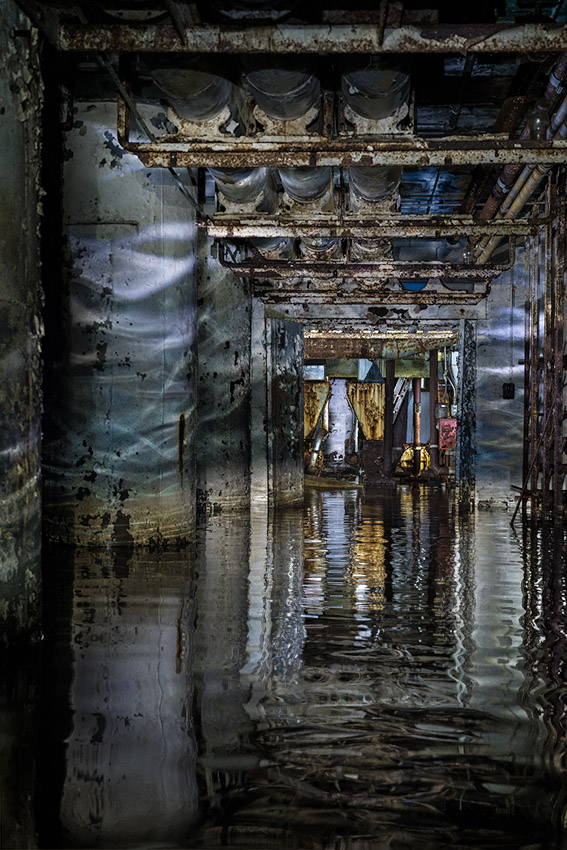
As I stepped off the bottom of the staircase leading down to the basement in the Lake and Rail flour mill I almost plunged my foot up past my ankle into a minor flood. I returned the next day armed with a cheap set of rubber boots and waded into the basement. I pointed a strong flashlight off to my right and it lit up the colors of the pillars, the ceiling beams, and the equipment framed by the doorway. It cast reflections of the waves I’d created over the scene and light almost sparkled off the ripples in the water. Capturing the scene was far from straightforward. I normally light-paint at a low ISO, allowing 8 seconds or so to evenly light a section of the composition, but here I had to freeze the ripples and undulating reflections across the whole scene, so higher ISO and much lower shutter speeds were called for.
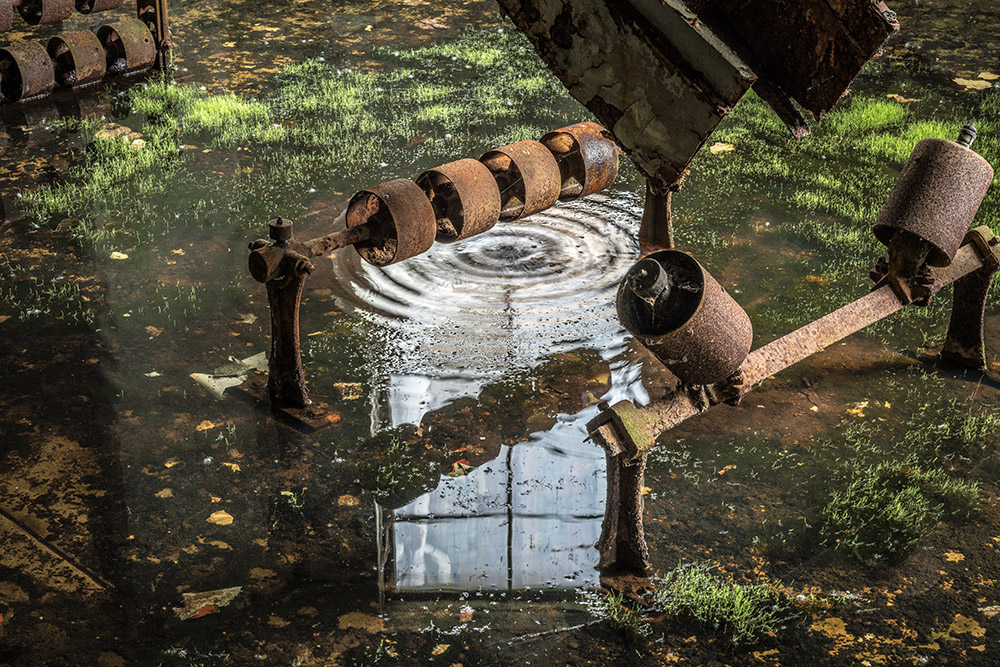
Even during dry times (mid-summer) you can find a little water here and there. Walking though the bottom of the American silo building on a hot dry day I heard the slow “plink” of water droplets and found water dripping out of the bottom of a silo (most likely partially filled and blocked) onto the remnants of the rollers still embedded in the floor. The window was framed around the water ripples for a little symmetry in this shot.
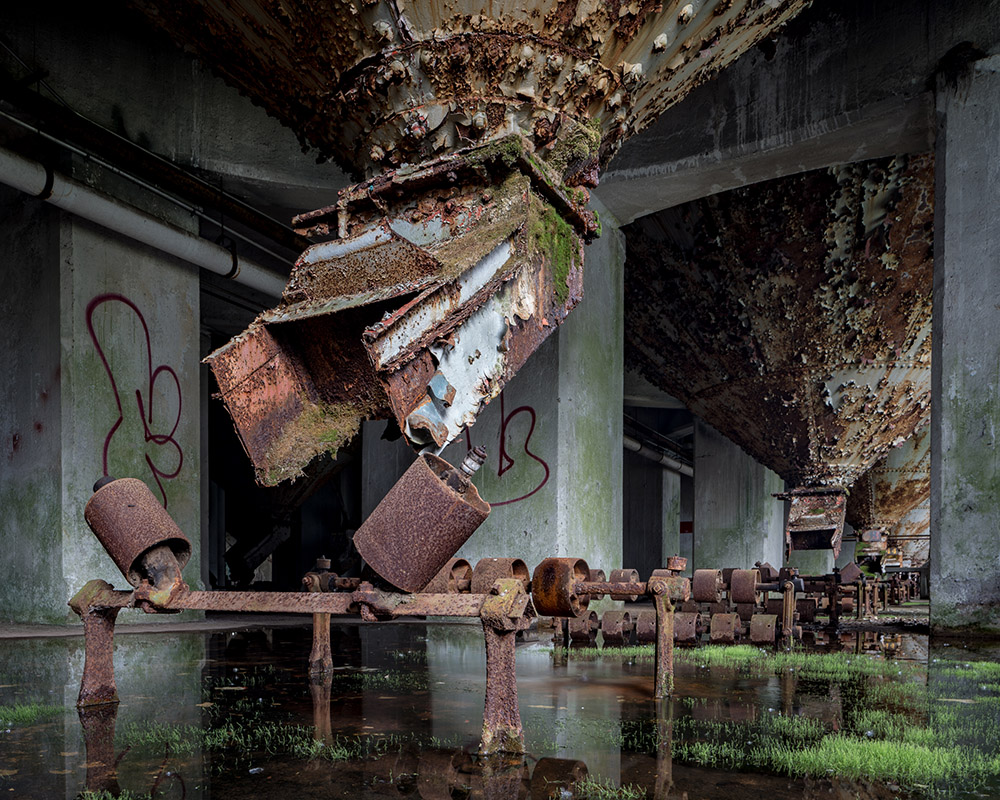
A different view from the same puddle of water, this time looking down the array of silos in the American building. The ripples were smoothed out as a much longer exposure was used because I was looking back into the darker building, and a small aperture was chosen to give ample depth of focus.
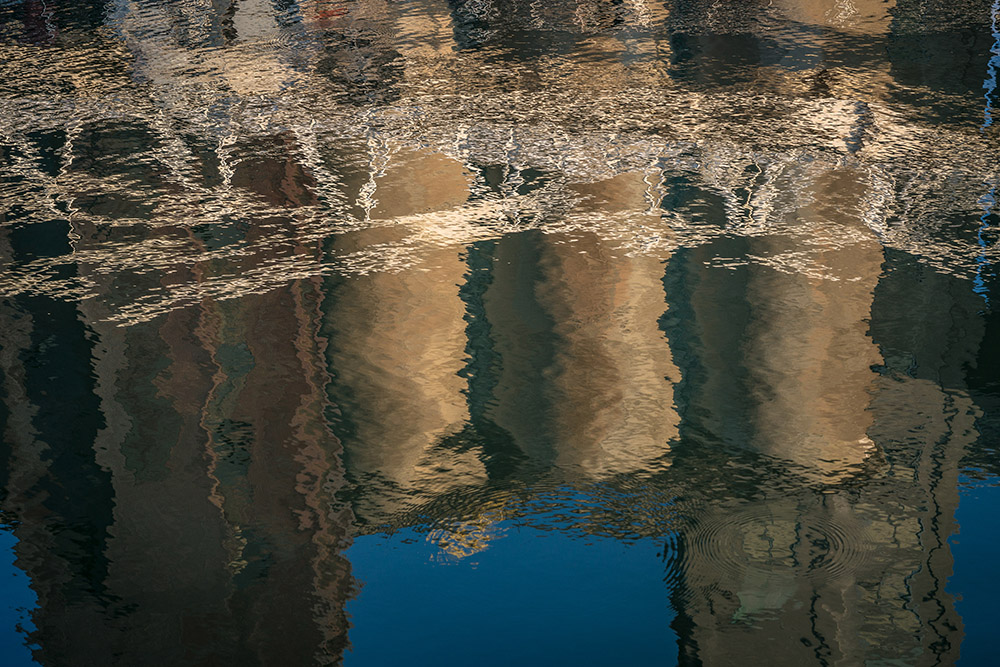
There are plenty of opportunities for photography outside the buildings (especially when your legs need a rest from climbing the stairs). Abstract scenes abound as well and here is a broken reflection in the Buffalo River of the side of the still working ADL silo with the frame of the dispensing arm of the Manitoulin as it moves into position to discharge a load of grain.
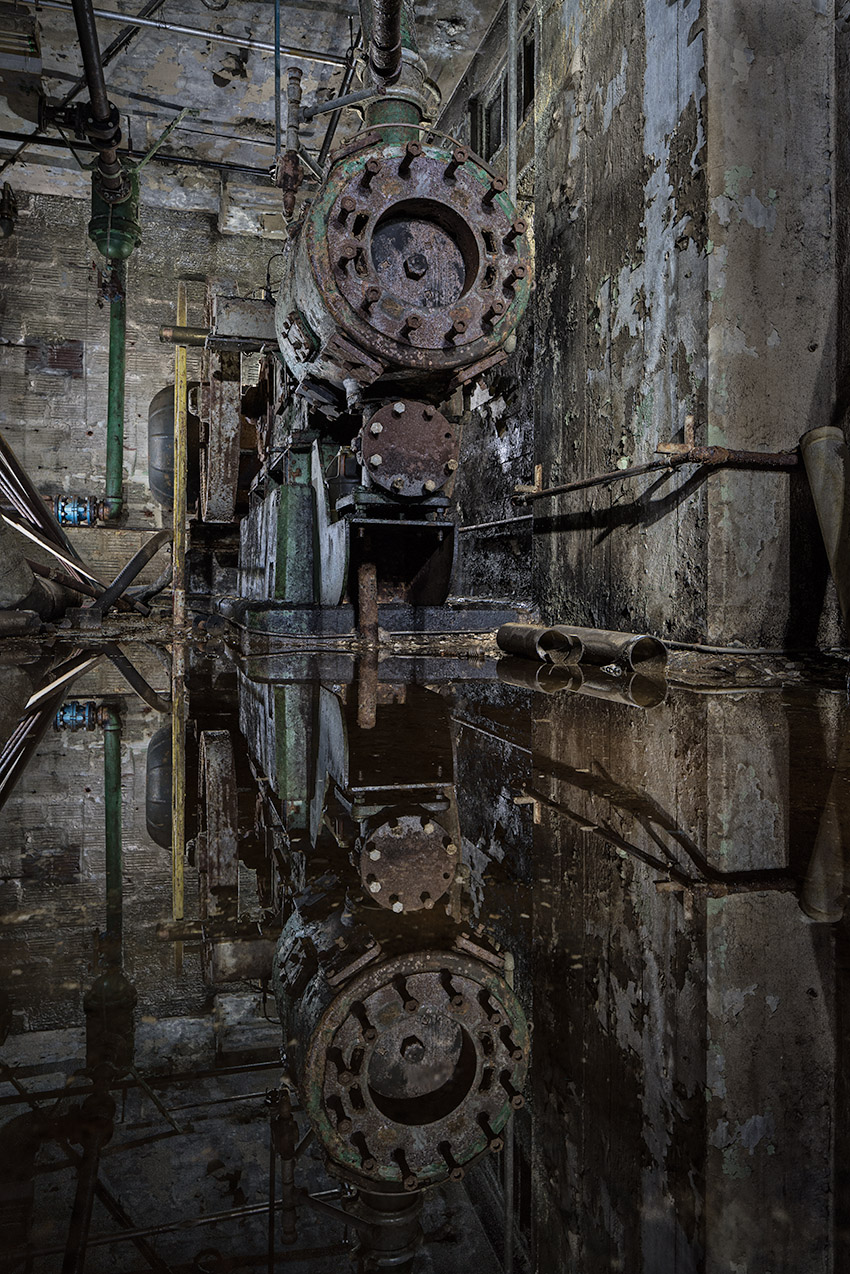
The 1st reflection image I had taken in the Lake and Rail basement before it was flooded last year. At that time the basement was largely dry, but some water had leaked in and left a small shallow pool around this pump. One advantage of finding pools of water in the buildings is that are usually mirror calm. A low camera position using a tabletop tripod allowed this composition with light-painting the walls and pump used to bring out the details.
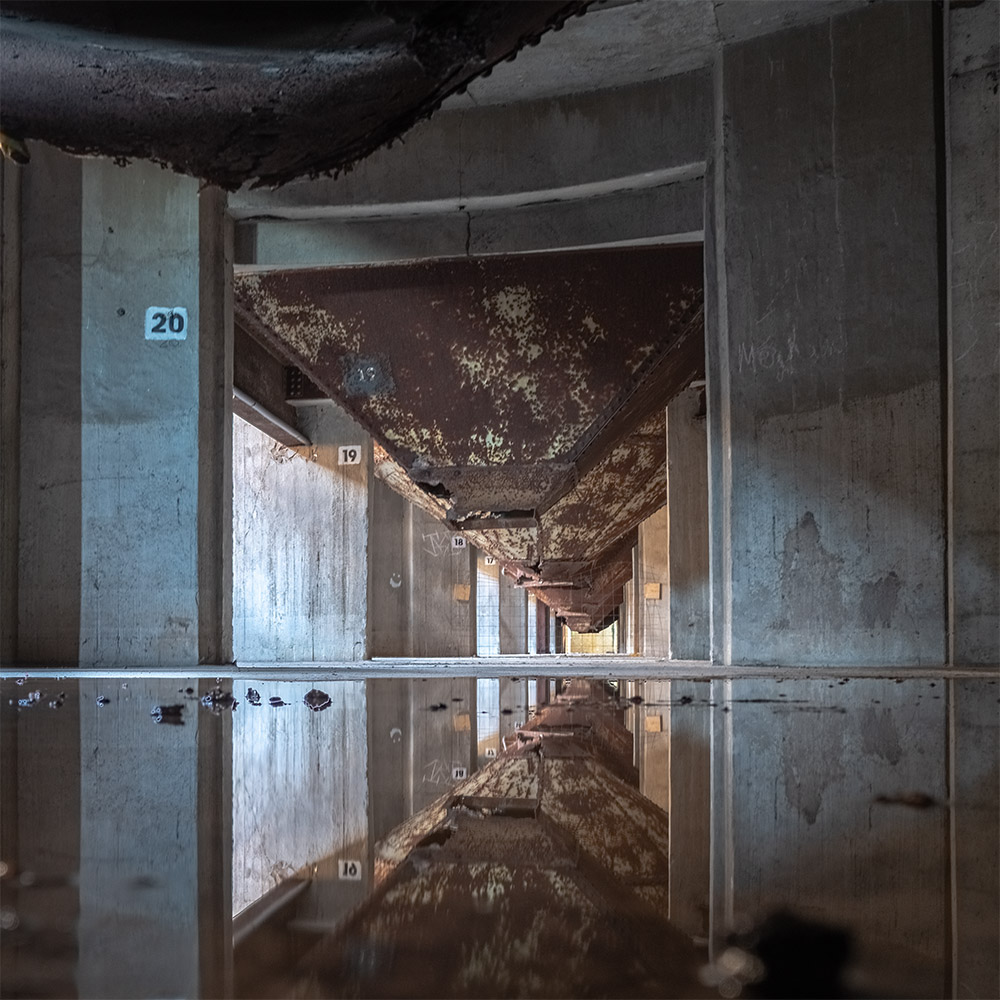
A reflection of the silo funnels looking down the length of the Marine A building on a visit which brought some torrential rain. The camera was placed on the floor supported by an RRS L bracket attached to a Canon-Sony Metabones adapter. This was an HDR blend captured with a 24mm Canon TSE lens using lens shift to maintain verticals.

Turn around and the same pool of water gives a different composition
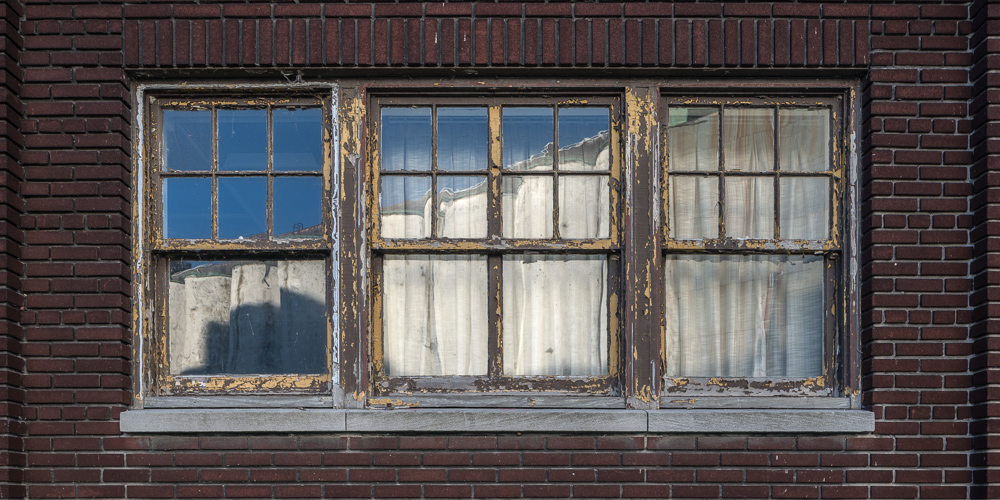
The side of the American Silos reflected from office building windows. The silos are clearly seen in the left window, partially obscured in the center and the reflection blocked with an old curtain on the right, perhaps following the progressive decay of the site and industry over the decades.
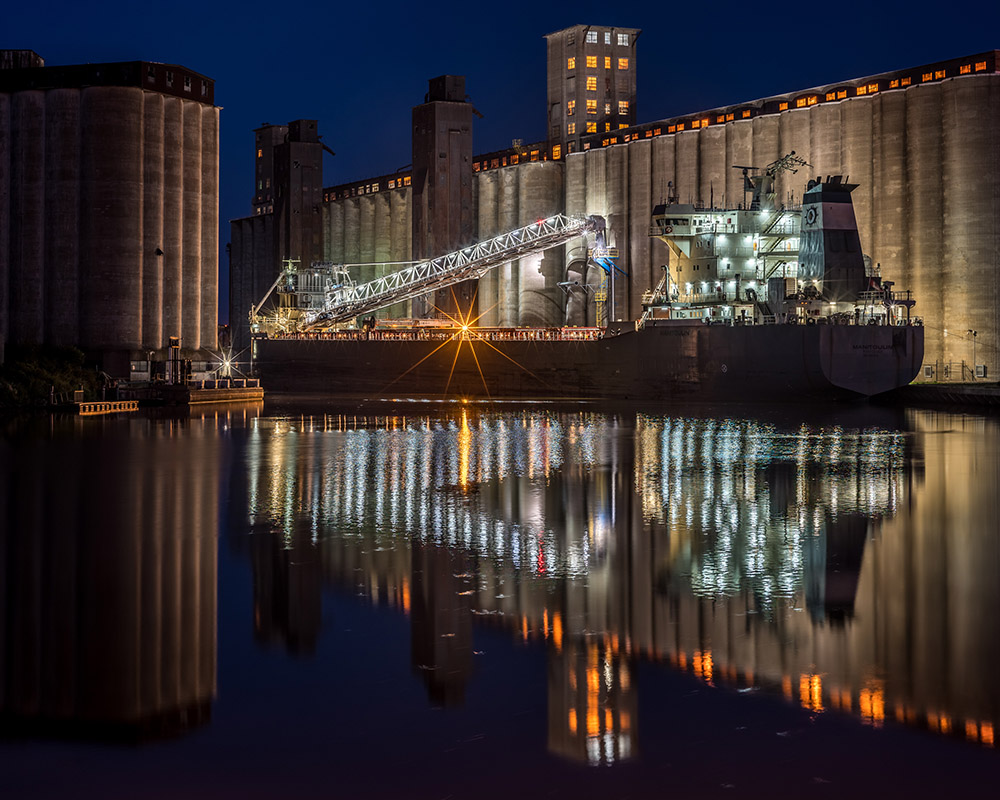
Last year was the 2nd time I’ve been at Silo City when the Manitoulin arrived to fill ADL, one of the last working silos in Buffalo. The 1st was on a stormy night, this time however the wind and river were calm and an early rise meant I was able to capture the ship with it’s working lights reflected in the bend of the river. The older ships would have loaded the silos using the 2 rusted marine legs seen in this image. Unloading and distribution were managed through a conveyor/scoop system and the legs ran along the side of the silos on train wheels and tracks. A single access port is now used and distribution handled internally.
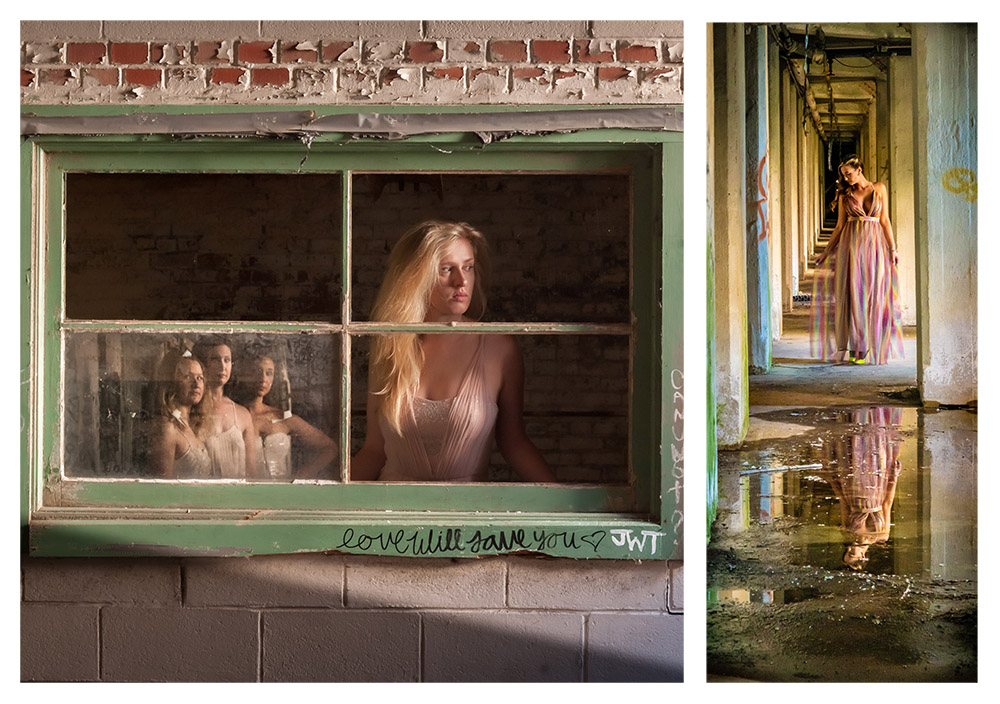
I confess to being an any-scape photographer and by and large do not photograph people, preferring to wait for some time until I get a clear scene. I admire people who do this though and conclude the reflection images with a couple of photos from Bill Woody, a good friend, and a great photographer who may be the longest Alum at Silo City. Bill is responsible for bringing dancers into Silo City and here are a couple of his reflection images.
Lightpainting American Silo Reflection
In addition to the opportunity to add images with reflections into your gallery the architecture of many of the buildings lend themselves to light-painting. This might be a blessing and a curse. Being able to see interesting compositions in a basement with no natural light, or light trickling into a room so poorly that capturing the image in the way you see it not possible. This is what was happening to me before I started light-painting which is the blessing side as you are then free to visualize and construct the light as you see fit. I hope the short and high-level screen captures below show how light-painting can open up opportunities;
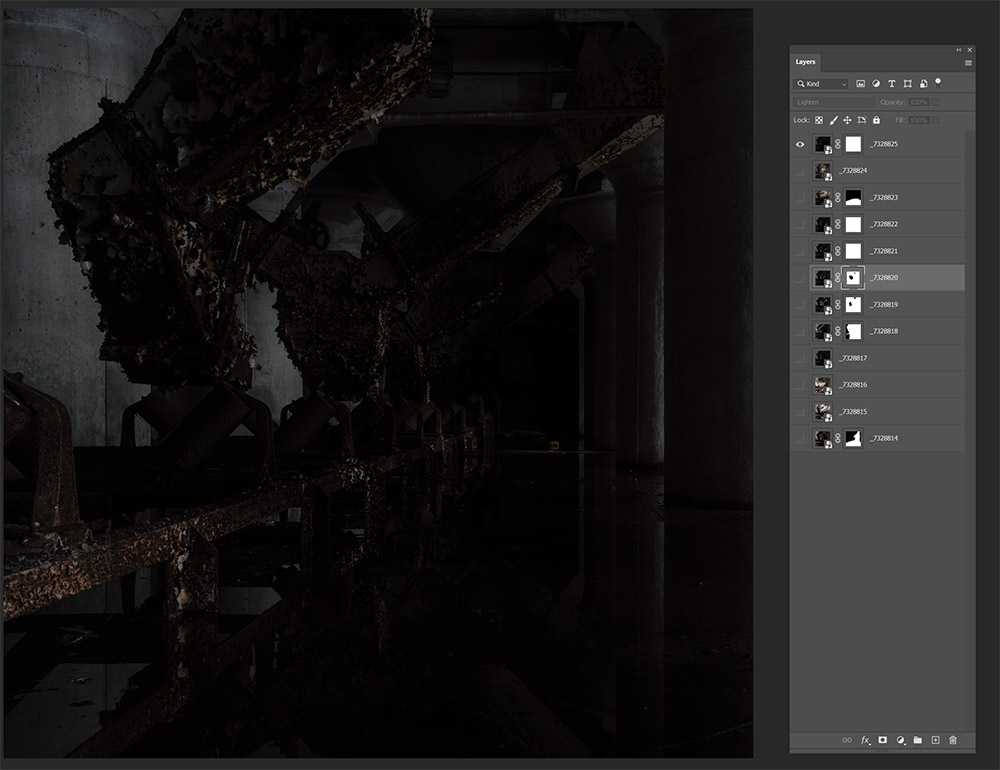
The starting image, no added light, this is what the camera sees. The image will be built up from most of the layers seen in the palette on the right. The only one showing at the moment is the top layer which is the background.
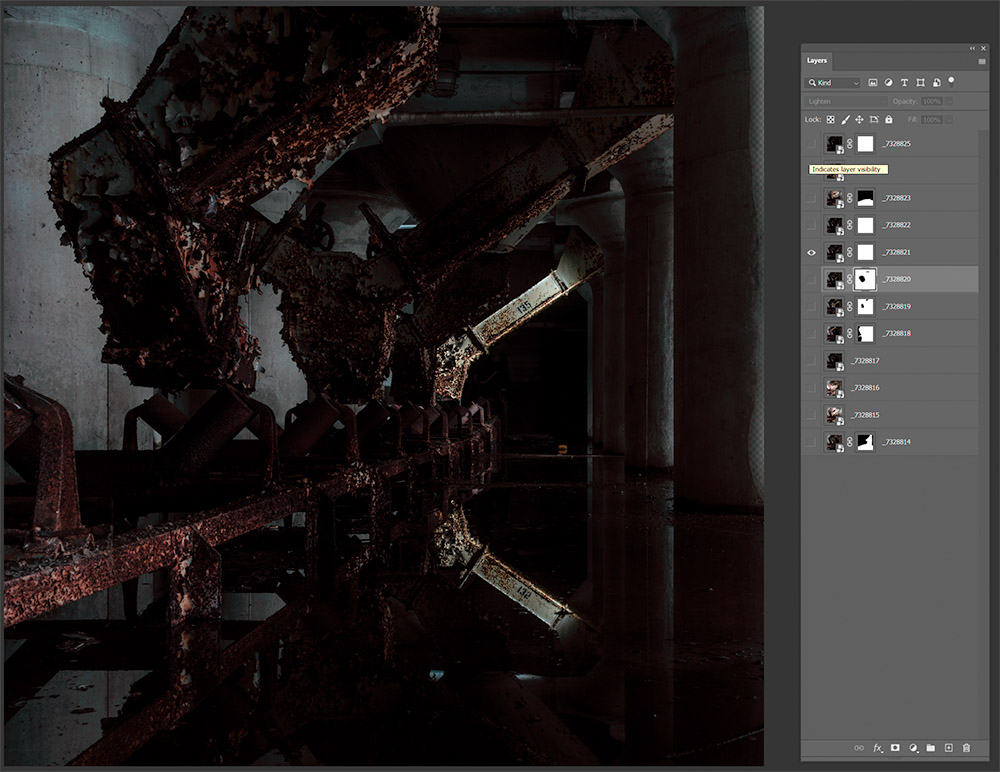
A single chute lit from the right side added to the background gloom, lighting kept even and at the correct angle to pick up the reflection. In Photoshop the layer blend mode is switched from Normal to Lighten to bring the lightest pixels to the front.
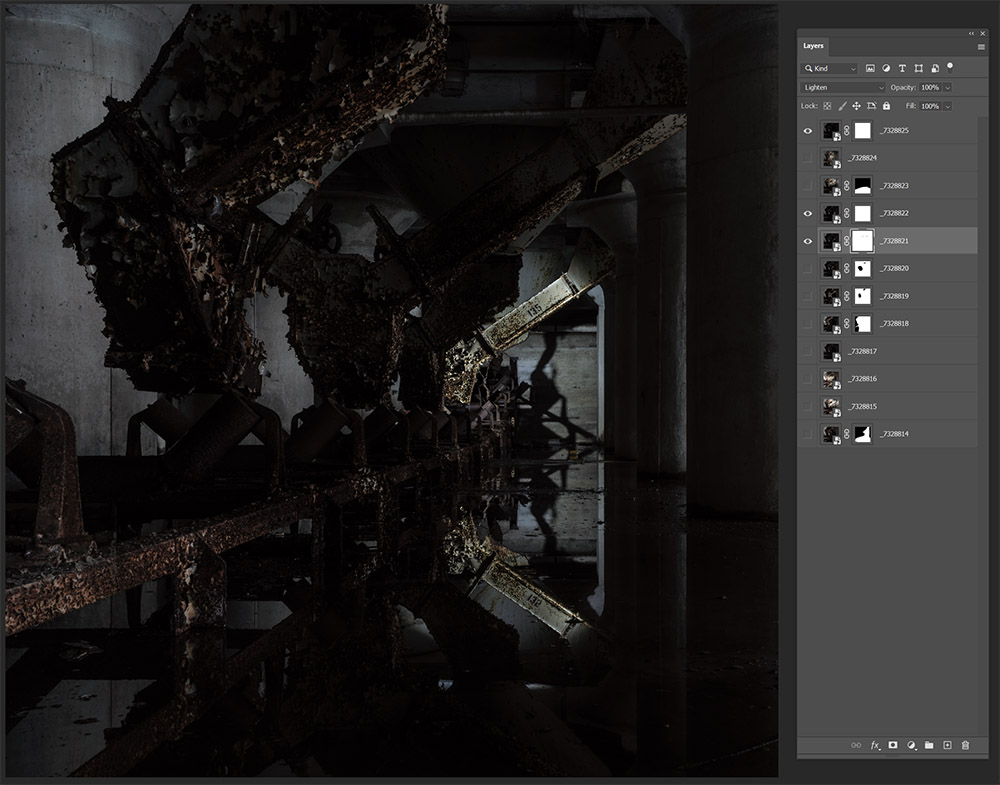
The rear wall added. Lighting here was from the left side to create shadows on the wall.
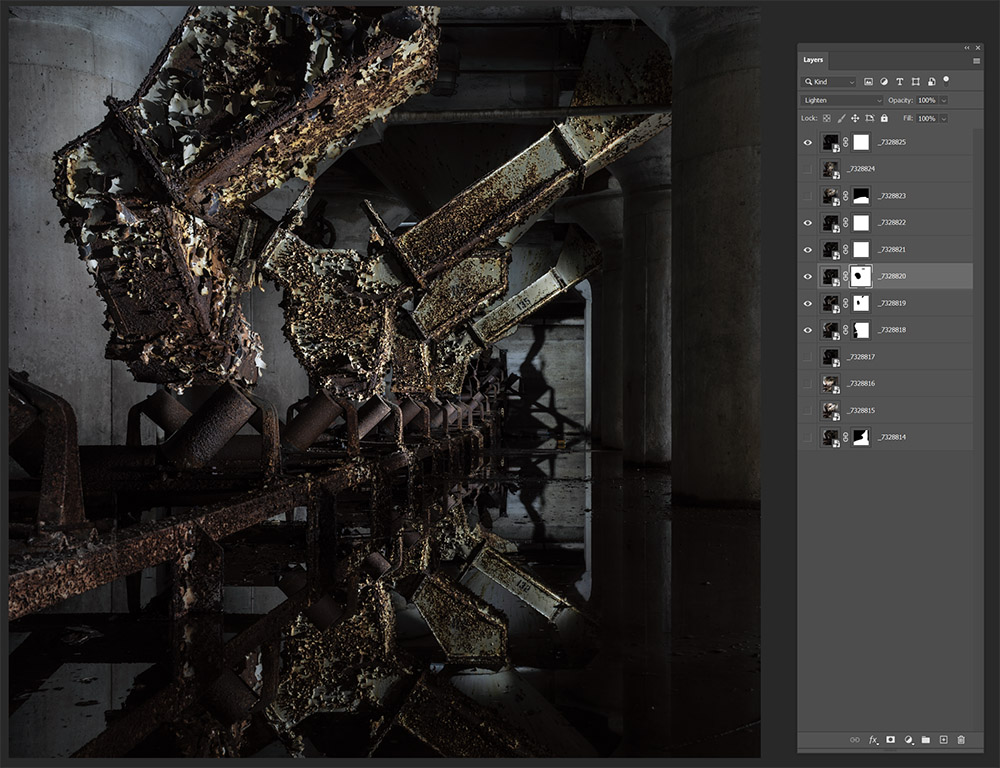
All of the chutes added to the image now, an additional 3 captures as seen by the eye icon next to the layer. Spillover light is managed by masking, painting the mask with a back brush to hide light not needed or intended. The effect is seen as small blotches to the right of the layer thumbnail. We are nearly there.
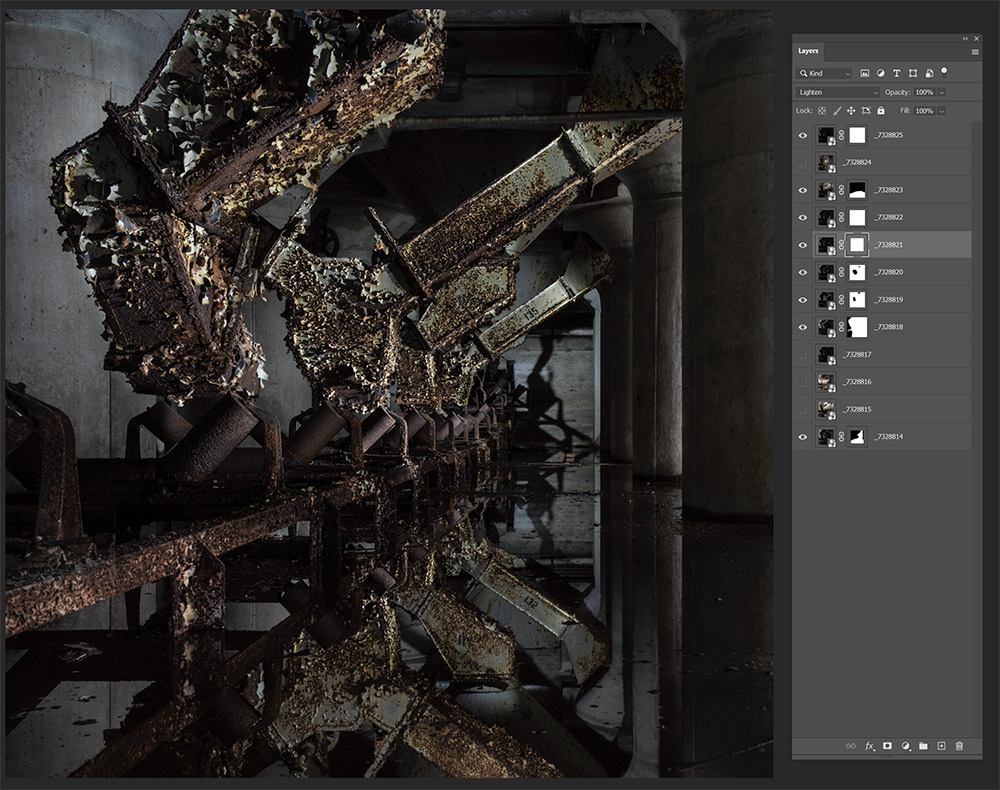
The final image with 2 more layers included. One to add a little more reflection into the bottom right of the scene by lighting the ceiling and top of the chutes (but then masking them out at the top). Also, a little light added to the railing on the lower left. 3 layers were left unused. I typically import only the images I expect to use after making any global adjustments in Lightroom, but I may bring in near-duplicates (my painting is not always uniform) or images I think I may need. But I’ll pick the final version of an exposure as I’m working and drop any images I don’t need as I process. I often leave the dupes and extras in case I change my mind later.
Mark Maio’s next Silo City Workshop is on July 31st – Aug 2nd. 2020
Publisher’s Note: Silo City is an amazing place to visit and especially photograph. I am a friend of Mark Maio and gave photographed at Silo City several times. I had a lot of fun shooting there as love the whole urbex kind of photography. Plus I am a rustaholic and there is a lot of rust. If the pandemic makes it possible, please give some consideration to making the workshop. If it works out, I’ll be there.
Mike Bromfield
June 2020
Cape Cod, Massachusetts
Mike retired from the high tech industry in 2015 (30+ years with DEC and Intel as a Manufacturing Process Engineer making computer chips). His photographic journey started in his 20’s taking landscape images while hiking in the Lake District and Scottish Highlands in the UK. “I wanted to be able to transfer those scenes to prints on my wall and feel as though I were there.” Printing is still one of the main drives behind his photography. On moving to the US he switched from color to black and white, and medium, then large format before the digital age. He lives on Cape Cod and considers himself an “any” scape photographer; ie landscape and industrial landscape, cityscape, seascape etc and has been using light-painting in the early morning, nighttime and indoor photography over the last few years to help with the final vision of these scenes.






